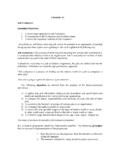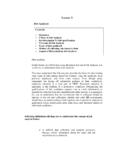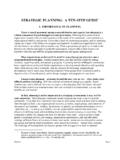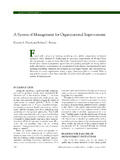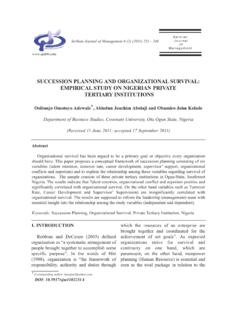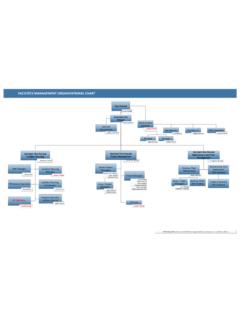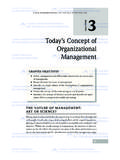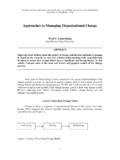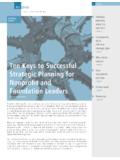Transcription of Lesson: 7 Human Resource Planning: Process, …
1 Lesson: 7 human resource planning : process , Methods, and Techniques Contents: The process of Human Resource planning Forecasting Demand: Nature, factors, techniques and approaches Forecasting Supply: Nature, techniques Determining Manpower Gaps Barriers to HRP Appendix: HRIS Suggested readings Article on HRP We have already touched on this earlier in the first lesson.
2 All expert agree on one thing that there is no fixed or standard procedure as such, but a general outline that has to be kept in mind while planning for Human resources. Keith Davis has rightly pointed out, An organization should identify their short-run and long-run employee needs examining their corporate strategies . This statement helps us understand that one should always adopt a situational approach to be more effective. Another most important conclusion (that I keep insisting!!) is that it is the corporate strategies and objectives that set a planning horizon.
3 You as the student at the end of the lesson, should be able to: a. Discuss the reasons for formal Human Resource planning . b. Describe the steps involved in the HR planning process (as discussed in class). Understand what goes into each step of the planning process . c. Recognize the methods available for forecasting demand for Human resources. d. Describe the options available for follow-up action. Understand when each option is appropriate. Managers follow a systematic process or a model when planning for HR. the following figure will illustrate the same.
4 FIGURE HR planning process Scan External Environment for Changes Affecting Labor Supply Analyze InternalInventory of HRCapabilities Forecasting organizational Need for People Survey of People Available HR Strategies and Plans organizational Objectives and Strategies You will notice that the process is familiar to you. We have already touched on this when doing lesson 2. The process of the HR planning begins with considering the organizational objectives and strategies. Then both external and internal assessments of HR needs and supply sources must be done and forecasts developed.
5 Key to assessing internal Human resources is having solid information, which is accessible through a Human Resource information system (HRIS). Once the assessments are complete, forecasts must be developed to identify the mismatch between HR supply and HR demand. HR strategies and plans to address the imbalance, both short and long term, must be developed. Before we outline the broad step in HRP, it is thus important to view the various kinds of plans that one can construct which tend to put a boundary on the exact steps to taken.
6 For instance, an organization can have: Company level plan Departmental level plan Job level This is in contrast to the National level plan Sectorial level plan Industry level plan, which are handled by the respective governments of the country. These last three plans provide an environmental constrain on the first three if you go by environmental factors we discussed in the earlier lesson. Similarly one has long-range plans and short range plans. The long range plans go side by side with the corporate strategic planning , such as planning for five-ten years hence; whereas the short range plans point out job openings must be filled over a one-year time frame.
7 Activity: Please give an example of each of the plans relating to anyone organization you are familiar with. That is, company level plan, departmental level plan, job level in relation to the relevant national level plan (for example, the 8th year plan), sectorial level plan and industry level plan The key to success is to blend both the practices that work within the company culture and the realities of business. It is rather a continuous process with provision for control and review. Remember lesson six!
8 !! And yes! HR planning will be different for a small and entrepreneurial organization as compared to a well established one. This would be clear if you refer the last lesson, especially the life stages of an organization. Another important question that comes to mind is who is responsible for this process . Top-level executives are responsible for manpower planning , as it is one of the important factors influencing the success of an organization. The plans are usually prepared by the Human Resource Division in consultation with other corporate heads.
9 The responsibility and accountability for manpower aspects of various divisions is on their respective heads. They should undertake their own appraisals of future needs in such a way as to provide a concrete basis for organization-wide forecasting and planning . The Human Resource Division must offer counsel and advice to various divisional heads and coordinate the various manpower estimates from time to time. Prof. Geisler outlined the responsibilities of Human Resource Department in respect of manpower planning thus: Assist and counsel operating managers to plan and set objectives.
10 Collect and summarise manpower data keeping long-run objectives and broad organizational interests in mind. Monitor and measure performance against the plan and keep top management informed about it. Provide proper research base for effective manpower and organizational planning . Thus, the three key elements of the process are Forecasting the demand for labor, Performing a supply analysis, and Balancing supply and demand considerations. A careful attention given to each step is beneficial to top managers and supervisors to meet their staffing requirements.
